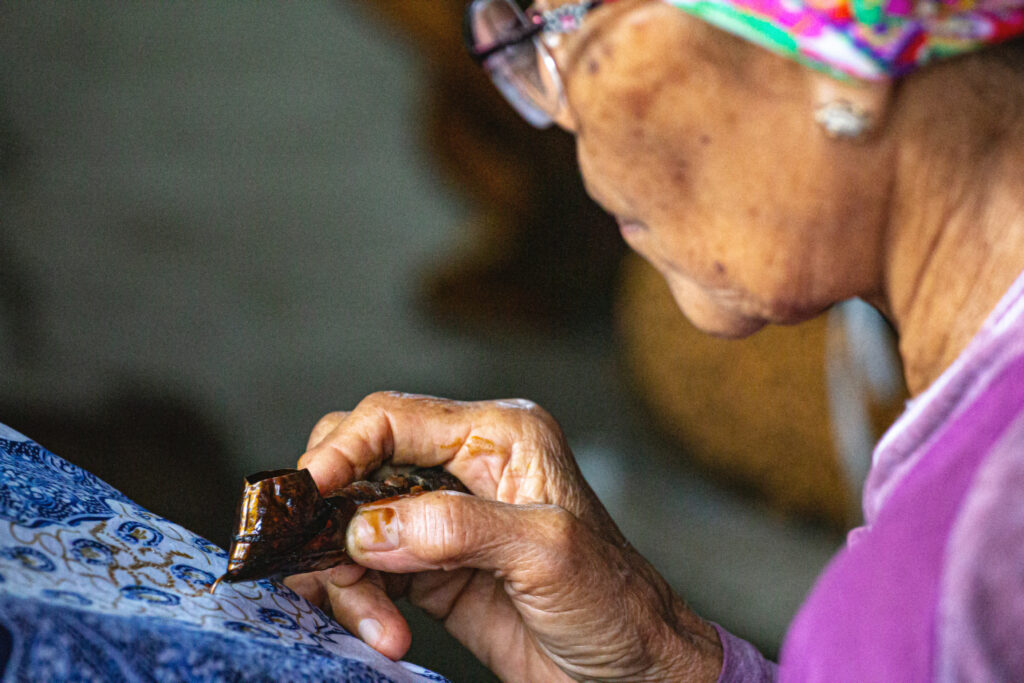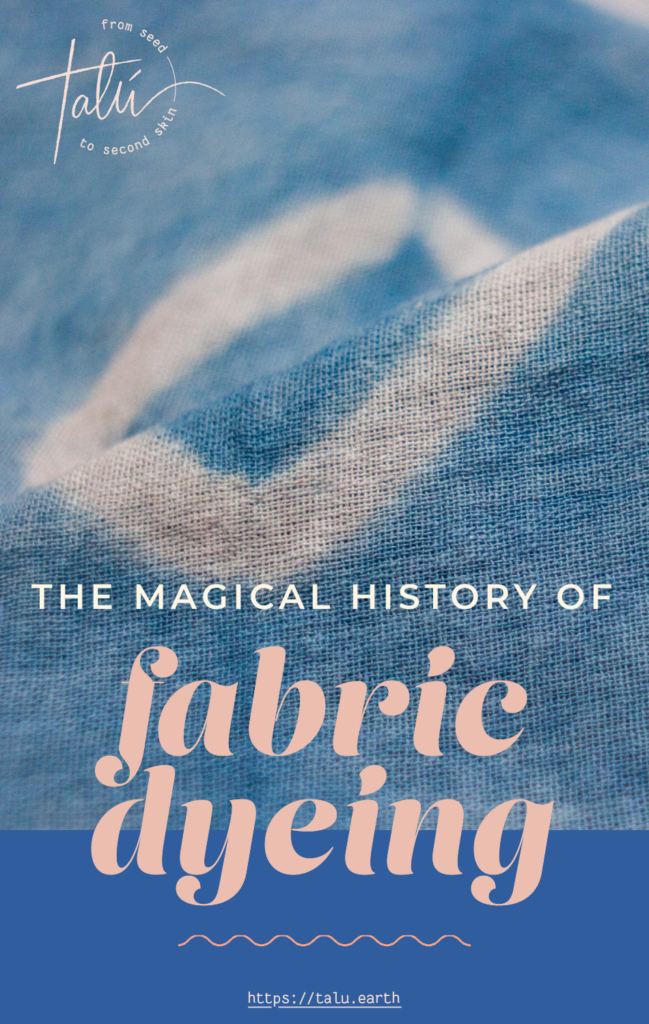Can you imagine living in a world where we didn’t have colours to express ourselves?
It seems that almost all of us have a soft spot or an attachment to certain coloured fabrics.
Whether it’s plain black dresses, bold burgundy curtains or light-wash denim jeans, colour undoubtedly plays a role in how we approach our individual style choices.
In this article, we are going back in time to learn the history of fabric dyeing and how each of us can do our bit when it comes to sustainable fabric dyeing. Because if you’re a sustainable nerd like me, the history of this ancient process is truly fascinating!

Where did fabric dyeing originally come from?
The oldest dyed textiles on record date from more than 30,000 years ago. They’re made from linen and were found in the Dzudzuana Cave in present-day Georgia. Thousands of years later, the Ancient Egyptians and pre-ceramic Peruvian communities were mainly using animals, vegetables/plants and minerals to dye their textiles.
Both animals and insects were used to create vibrant colours in Ancient times, but the most remarkable discovery of animal dyeing came from the cochineal insect in Latin America.

Before the arrival of the Spanish conquerors in the Americas, red was very sought-after in Europe. With the conquest, cochineal quickly became globally exported to produce the colour red in high volumes of clothing, textiles and interiors all over the world. Even today, cochineal red is still used a lot as a food colouring: look out for colour E120!
Another interesting colour that to this day, is still associated with royalty and tradition, is purple. But very few people actually know the real reason behind this connection.
‘Tyrian purple’, is a deep shade of purple which was extracted from sea snails and shellfish around the Mediterranean. Since lots of shellfish were required to produce this deep, mesmerising colour, it came with a hefty price tag that only the wealthiest nobles and priests could afford.

Vegetable and plant dyes such as weld and madder were firm dyeing favourites in Europe, due to their excellent colourfastness.
Indigo, which was produced from various plants such as Indigofera tinctoria, Persicaria tinctoria or Isatis tinctoria, was the only source of blue dye for textiles. Its synthetic version can be found in almost every pair of jeans on shelves today.
What are the most common ancient dyeing techniques in the history of fabric dyeing?
Over the last few centuries, continued trial and error in fabric dyeing has led to the creation of many unique dyeing techniques across different cultures in the history of fabric dyeing.
Resist textile dyeing
This type of method is at the forefront of most dyeing traditions. It’s a technique that employs materials such as wax, mud or rice paste to prevent the dye from reaching certain areas of the textile, creating unique patterns and designs. Batik is an example of resist dyeing.

Ikat dyeing
Commonly known for creating unique designs on rugs, curtains and other interiors, ikat designs are made by tying and bundling different parts of the thread together before using it for weaving. This results in unique patterns and designs on the final woven fabric.
The ikat form of fabric dyeing originated in South East and Central Asia, and slowly made its way across the world to South America.
Tie dyeing
Although fabric with tie-dye might remind you of the sixties and the ‘peace and love’ generation, tie-dye actually originated long before this era.
Tie-dye techniques first originated in pre-Columbian Peru and places along the Silk Road in China. More than 1,300 years ago tie-dyeing was introduced to Japan and became what is better known as ‘shibori dyeing’.
Shibori textiles were traditionally created in Japan using indigo dye, however these days, this technique is produced in multi-colored dyes and is used to create art fabrics, furniture and high-end interiors all over the world.

Who invented synthetic fabric dyeing?
The first man-made dye was reportedly discovered by William Perkin, a Chemist in Britain in 1856. By accident, William happened to notice that a deep hue of purple had changed the colour of his washcloth from his previous experiment using coal-tar, sparking his curiosity and urging him to perform further fabric dyeing experiments.
Natural fabric dyeing is just one way of giving back to planet Earth.
In today’s society, almost all fabrics that are purchased and sold are dyed using synthetic materials – and this, in short, is killing our planet.
Relying on synthetic dyes to colour fabrics creates an endless list of problems for our environment, from high levels of water and energy consumption to excessive levels of pollution and waste – and that is only skimming the surface.
Natural dyeing is an opportunity to come back to the Land and support planet Earth with sustainable, long-term textile production that helps heal our planet, instead of hurting it.
Now that you’re an expert in the history of fabric dyeing, want to learn about natural dyeing step by step?
My signature workshop Living Colours with the Five Elements shows you exactly how to create a sustainable cycle between Land and Nature so that you can have fun with your wardrobe and have full control over your colour and upcycling options at home. I hope to see you there!
Pin this post!
